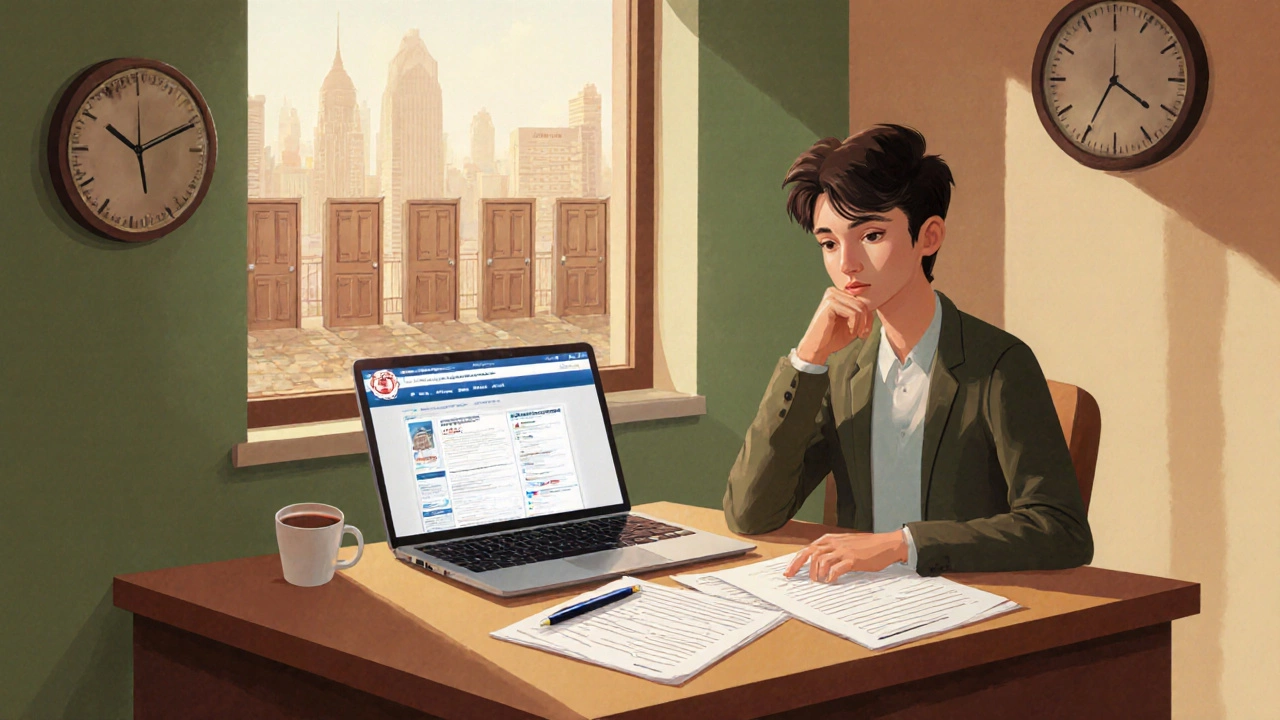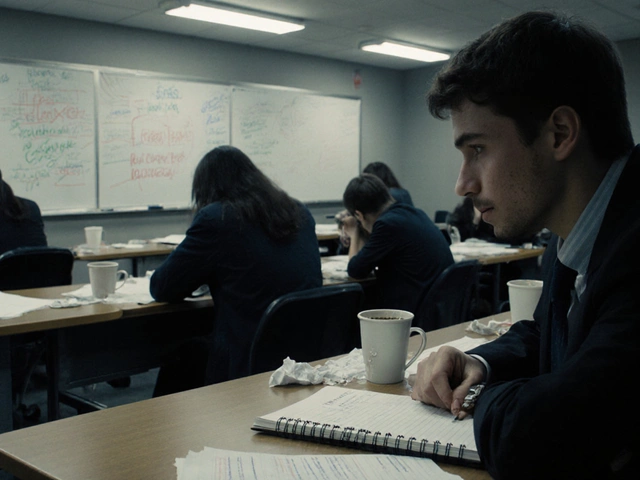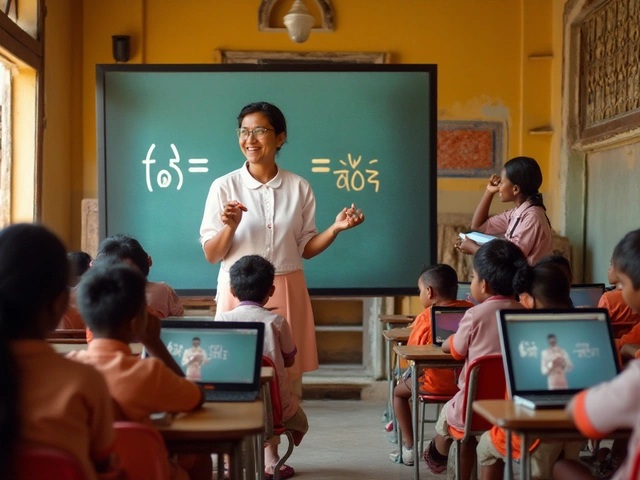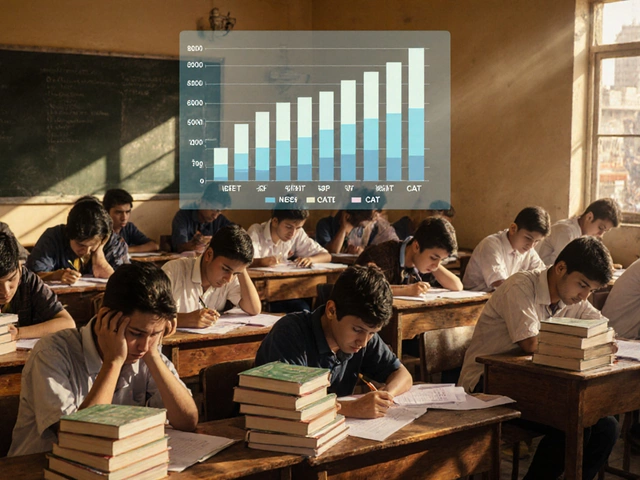Government Job Interview Rounds Calculator
Expected Interview Rounds
HR Screen
Verify basic fit, eligibility and motivations
Panel Interview
Assess competencies against role specification
Assessment Centre
Observe candidates in realistic work simulations
Technical Interview
Test subject-matter expertise
Final Interview
Senior leader endorsement and salary discussion
When you apply for a civil service role, the first question that pops into most candidates’ heads is: "How many interviews will I actually face?" The short answer is that most government positions involve anywhere from two to four interview rounds, but the exact number can shift depending on the department, the seniority of the role, and the specific selection framework they use.
Understanding the Full Selection Process
A typical selection process is the series of steps a public sector organisation follows to move a candidate from application to appointment includes several distinct stages:
- Online application and eligibility check.
- Written or online aptitude test (often called a shortlisting test).
- One or more interview rounds.
- Reference checks and background verification.
Only the interview segment varies widely, and that’s where most job‑seekers focus their preparation.
Typical Interview Rounds You’ll Encounter
Below is a rundown of the most common interview formats you’ll see across UK government bodies.
| Round | Purpose | Typical Length | Common Focus |
|---|---|---|---|
| HR Screen | Verify basic fit, eligibility and motivations | 15‑30 minutes | Behavioural facts, knowledge of civil service values |
| Panel Interview | Assess competencies against the role specification | 45‑60 minutes | Situational questions, STAR‑based answers |
| Technical/Role‑Specific Interview | Test subject‑matter expertise | 30‑45 minutes | Case studies, policy analysis, technical problem‑solving |
| Assessment Centre | Observe candidates in realistic work simulations | Half‑day to full‑day | Group exercises, role‑plays, written tasks |
| Final Interview | Senior leader endorsement and salary discussion | 30‑45 minutes | Strategic thinking, leadership potential |
Not every government vacancy will include all five rounds. Entry‑level administrative posts might stop after the panel interview, while senior policy roles often finish with a full‑day assessment centre followed by a final interview with a director.
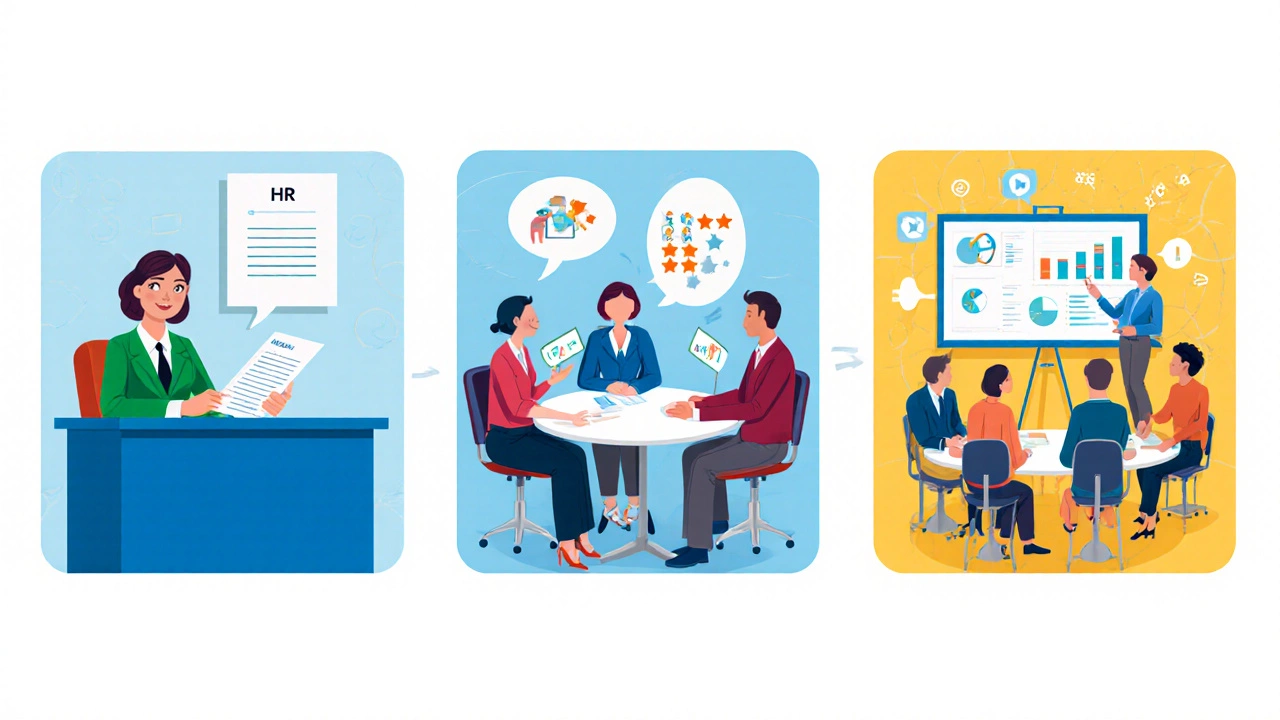
What Each Round Looks For
The competency‑based interview is a technique where interviewers ask for past examples that demonstrate specific behaviours aligned with the job’s competency framework. Recruiters score you on criteria such as "communication," "problem solving," and "leadership." They want concrete evidence, not vague statements.
When a situational judgement test (SJT) is used as part of an interview, candidates are presented with realistic workplace scenarios and asked to choose the best course of action. Your answers reveal how you’d handle ethical dilemmas, stakeholder conflicts, or policy trade‑offs.
Technical interviews dig into the knowledge you listed on your CV. For a data analyst role in the Department for Work and Pensions, you might receive a mini‑task to interpret a dataset and suggest policy implications. For a legal adviser position in the Home Office, the focus shifts to legislative interpretation and case law analysis.
Variations by Department and Role
Different public bodies have their own flavour of interview structures.
- Civil Service - Generally follows the standard three‑round model: HR screen, panel interview, and an assessment centre for higher grades.
- NHS - Frequently adds a competency‑based interview that emphasises patient‑centred values and an optional technical interview for clinical science posts.
- Police Service - Combines a personal suitability interview with a situational judgement test and a physical‑fitness assessment, sometimes counted as a separate "interview" round.
- Local Councils - Often merge the HR screen and panel interview into a single 45‑minute session, followed by a short assessment centre for management positions.
Senior roles (grade 7 and above) can see an extra “executive interview” where you meet senior leaders and discuss strategic vision. That round usually focuses on leadership style, change management experience, and alignment with departmental priorities.
Step‑by‑Step Preparation Checklist
- Read the job description line‑by‑line; highlight every competency mentioned.
- Draft STAR (Situation, Task, Action, Result) stories for each competency. Aim for two examples per skill.
- Research the department’s current policies, recent news, and strategic goals.
- Practice a mock panel interview with a friend or mentor; ask them to switch roles between interviewer and observer.
- For assessment centres, review typical exercises: group discussion, written report, role‑play. Time yourself.
- Refresh knowledge of the civil service values: integrity, honesty, objectivity, and impartiality.
- Prepare thoughtful questions for the interviewers - shows genuine interest.
- Plan logistics: travel route, dress code (smart‑business), and any required documents.
Common Pitfalls and How to Avoid Them
Even well‑qualified candidates stumble when they forget the nuances of public‑sector interviewing.
- Talking in generalities - Recruiters want specific examples. Replace "I’m a good team player" with a concrete situation where you resolved a conflict.
- Ignoring the values - Failing to reference the civil service core values signals a cultural mismatch.
- Over‑preparing answers - Sounding rehearsed can backfire. Keep stories flexible and adapt to the question.
- Neglecting the assessment centre - Treat it as a full interview, not a “nice-to‑have” activity.
- Skipping the final interview - Even if you feel confident, the final round is often where salary and start date are locked in.
By staying aware of these traps, you increase your chances of moving smoothly from one round to the next.
Putting It All Together
To answer the headline question directly: you should expect between two and four interview rounds for most government jobs, with the exact number shaped by the role’s level and the department’s hiring framework. Knowing what each round looks like, what competencies are probed, and how to tailor your preparation will turn that uncertainty into a clear, actionable plan.
Frequently Asked Questions
How many interview rounds are typical for entry‑level civil service jobs?
Most entry‑level positions involve two rounds: an HR screen followed by a panel interview that focuses on the core civil service competencies.
What is the difference between a panel interview and an assessment centre?
A panel interview is a one‑to‑one conversation with multiple interviewers, mainly testing your behavioural fit. An assessment centre is a half‑day or full‑day event where you complete group exercises, case studies, and sometimes role‑plays, allowing assessors to observe your skills in action.
Do I need to prepare for a technical interview if I’m applying for a policy analyst role?
Yes, senior policy analyst roles often include a technical interview where you’ll be asked to analyse a policy brief, interpret data, or propose a solution to a hypothetical scenario. Review recent policy papers and practice concise, evidence‑based arguments.
Can I skip the assessment centre if I perform well in the panel interview?
Usually not. For many graduate and higher‑grade posts, the assessment centre is a mandatory stage because it evaluates teamwork and problem‑solving under pressure-skills that a panel interview alone can’t fully reveal.
How should I dress for a government job interview?
Smart business attire is safest: a blazer with a shirt or blouse, neat trousers or a skirt, and closed‑toe shoes. Even if the department’s culture is casual, a polished look shows professionalism.
